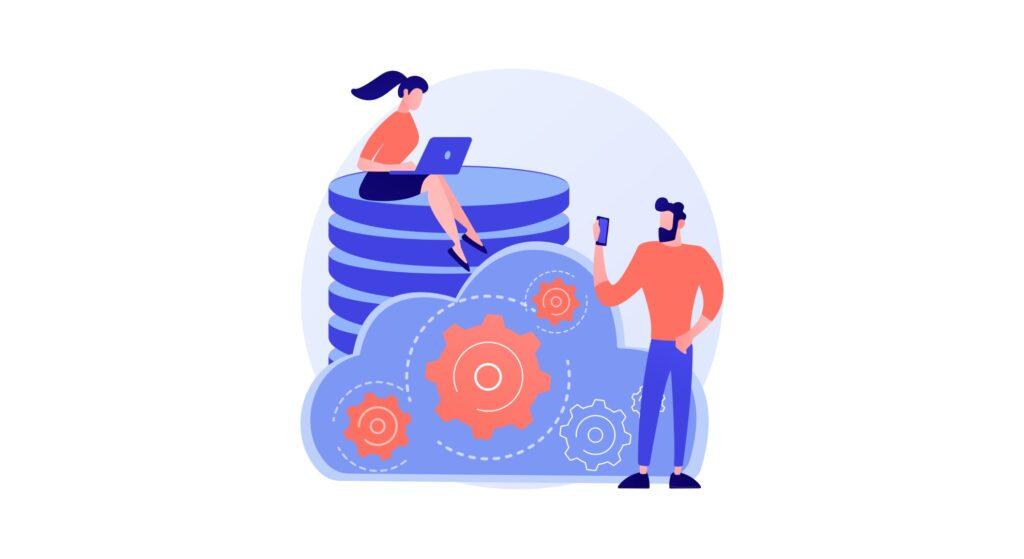
If you are already familiar with how programmatic works, you may skip the following 2 paragraphs and dive straight to the audience data types in programmatic.
Brief History on Programmatic
Programmatic has been around since early 2000s. However, it is only recent when digital marketers have begun turning to programmatic to increase their efficiency of buying advertising spaces online. During the early months of the pandemic, staying and working from home started becoming the norm. Brands saw the importance of marketing automation as consumers have been shifting their purchases online. With automated bidding and ad placements, businesses have seen an increase in their Return on Ad Spend (ROAS) and sales revenue online. (Read more on programmatic and its history here).
How does Programmatic work?
Programmatic technology helps digital marketers to efficiently determine which ad to be shown to the target audience, where to display the ad, and measure business performance. This saves a ton of time, compared to the traditional process of transacting. Instead of pre-negotiating on the advertising cost with individual publishers, this is now being streamlined. Furthermore, programmatic allows measurement of both media and business metrics, providing control and transparency to advertisers. All of the advantages above (list is not exhaustive) stems from the algorithm and metrics obtained from the consumers.
Though programmatic is a highly automated process, it ultimately requires marketers to understand and leverage on the right data to maximize the efficiency of the ads. There are three types of data, defined by ownership – 1st party, 2nd party, and 3rd party.

What are 1st, 2nd, and 3rd party data?
1st party data
Do you recall receiving an email reminding you about the pair of sneakers which you have left in your Lazada shopping cart, or from any other e-commerce website? This is where 1st party data comes into play.
Data that is collected and owned by you (as the marketer) is referred to as 1st party data. It typically comes from your website/app traffic, feedback form submissions, online purchases, or a membership program in your business. This type of data is the most accurate and valuable, as it is derived from your existing customers and stakeholders (who have a proven interest in your product).
Despite the accuracy of 1st party data, it is the most limited in terms of its scope of insight. It only provides you with details about your customers, and not anyone else outside of your customer base. For example, if you’re selling dog treats on your website, your 1st party data base will solely be from dog owners and specifically, dog owners who use your products.
2nd party data
2nd party data refers to data that has been collected by another company which has been passed to you. Non-rival companies tend to exchange their data to mutually benefit each other and increase their reach.
For example, McDonalds and Grab may exchange data on the top-selling breakfast item. They may also exchange insights such as the time in which most people order McDonalds via GrabFood app. These insights can fuel their performance marketing strategy. In a similar vein, Grab can list the item as a recommended item to attract customers to order via the app. McDonalds will also able to efficiently allocate their staff to cater for the peak period.
Nonetheless, 2nd party data is still limited to the audience of the partner’s company, and there is no control over the quality of data.
3rd party data
Out of all three types of data, 3rd party data has the highest reach but the lowest quality and accuracy. You will not be able to control the quality of data received, unlike 1st party data. This type of data is sourced for and collated by a data company. Data from these companies are often grouped into different profiles, such as their demographic, location, interest, and intent. With more data on hand, you will be able to reach out to a wider group of audience and increase your customer base.
An important point to note about 3rd party data is that if you are able to access it, your competitors will be able to too.
Which data should I gather?
Each type of data has their own plus points and limitations. In order to maximize the use of data and limit the disadvantages, it is best to collate all three types of data. This will definitely enable you to make a better and more informed decision in your business.
Stay tuned for a follow up post where we walk you through what makes a good data strategy!
Attribution
Vector by Rawpixel via Freepik
Data by Firza Alamsyah from the Noun Project
Handshake by Susannanova from the Noun Project
Data by Wenjie from the Noun Project

